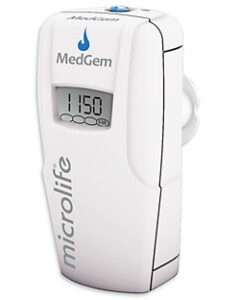According to the National Commission for Quality Assurance (NCQA), physicians should screen overweight or obese patients using the body mass index (BMI) scale.
This screening is generally completed with a simple wall chart or electronic medial record (EMR) system within most physician practices. However, even if physicians do screen a patient’s BMI, most practices do little with this information.
Common practice is to advise the patient to lose weight. However, less than 40% of obese patients are advised to reduce body weight. (1) Considering nearly 65% of adults are over weight 33% are obese, only 12% of patients are advised to lose weight.
When a patient is advised to lose weight, often the physician provides closed-ended messages.
- You need to exercise more.
- Stop eating at fast-food restaurants.
- Reduce your calories.
Although the advice is correct, the short-term and long-term outcome of these messages has no effect on weight reduction. (2) In addition, most overweight and obese patients are frustrated that their physician provides these closed-ended messages about weight management. (3) Recent studies have demonstrated that patients want help from their physician when it comes to weight loss. (3, 4)
Almost all overweight and obese patients want a detailed, individualized weight loss plan from their family physician.
Over 80% of overweight and obese patients want their family physician to be active part of their weight management treatment including monitoring their progress.
Patients want their physician to initiate discussions and provide individualized recommendations for reducing excess body weight.
Increasingly, a physician-guided, patient-centered model of treatment for weight reduction is being recommended by leading specialists and health associations as a way to improve patient outcomes. In fact, individualized and physician monitored programs are more effective in helping patients reduce excess body weight. (5, 6)
Individualized treatment based on a patients metabolic needs.
The use of predictive equations to determine a patient’s metabolic needs do not account for individual variables (i.e., medical conditions, medications, body composition, genetics, etc.).
Many other factors can significantly impact metabolism, further compromising the application of predictive formulas. Research has demonstrated that Resting Metabolic Rate (RMR) can vary substantially even among individuals that are similar in height, weight, age, and gender. (7)
A recent study indicated individuals participating in a weight management program and had their nutrition plan developed from measured RMR compared to estimated RMR experienced nearly double the weight loss. (8) Moreover, the American Dietetic Association’s guidelines for adult and pediatric weight management recommends using indirect calorimetry (IC) to measure a patient’s metabolic needs when developing individualized nutrition plans. (9)
As a result, the use of IC (such as the MedGem device) is increasingly recognized as an effective and evidence-based method for treating overweight and obesity.
 The MedGem is designed for Bariatric Doctors, Dietitians and other healthcare professionals who need an FDA-approved medical device.
The MedGem is designed for Bariatric Doctors, Dietitians and other healthcare professionals who need an FDA-approved medical device.
The MedGem displays both the RMR and Resting VO2 for patient diagnosis. Insurance reimbursement rates range from $60 – $80 in total reimbursement. AMA CPT Information Services advises using CPT Code 94690 (oxygen uptake) as the primary code for the RMR measurement.
Medical professionals use the MedGem to ensure accurate and reliable measurements for use in their weight management programs. CLICK FOR MORE INFO ON THE MEDGEM
1. Ko J, Brown D, Galuska D, et al. Weight loss advice U.S. obese adults receive from healthcare professionals. Prev Med, 2008; 47(6): 587-592.
2. Franz, VanWormer J, Cain A, et all. Weight loss outcomes: A systematic review and meta-analysis of weight loss clinical trials with minimum 1 year follow-up. J Am Diet Assoc, 2007; 107(10): 1755-1767.
3. Beran M, Fowles J, Kind E, et al. State of the art reviews: Patient and physician communication about weight management: Can we close the gap? Am J Life Med, 2008; 2(1):75-83.
4. Tan D, Zwar N, Dennis S, et al. Weight management in general practice: What do patients want? Med J Aust, 2006;185(2):73-75.
5. Noar S, Benac C, & Harris M. Does tailoring matter? Meta-analytic review of tailored print health behavior change interventions. Psychol Bull, 2007; 133(4): 673-693.
6. Laws R. A new evidence-based model for weight management in primary care: The Counterweight programme. J Hum Nutr Diet, 2004;17(3):191-208.
7. Foster G, Wadden T, Mullen J. et al. Resting Energy Expenditure, Body Composition, and Excess Weight in the Obese. Metabolism. 1988; 37(5): 467-472.
8. McDoniel S, Nelson H, Thompson C. Employing RMR technology in a 90-day weight control program. Obes Facts, 2009; 1(6): 298-304.
9. American Dietetic Association. Adult weight management evidence-based nutrition practice guidelines. 2006: www.adaevidencelibrary.com.